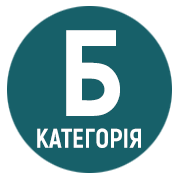PROSPECTS FOR THE USE OF ETHNO-CULTURAL RESOURCES OF THE LVIV REGION IN SCHOOL LOCAL GEOGRAPHY AND TOURISM WORK
DOI:
https://doi.org/10.32782/2786-5843/2023-1-1Keywords:
ethnо-cultural resources, ethnic tourism, ethnographic regions of the Lviv region, local history, school tourismAbstract
The article substantiates the important tourism and regional significance of ethno-cultural resources, which are considered as a combination of cultural heritage of ethnic communities and groups. Revealing the interconnectedness of various historical and geographical phenomena on the examples of the native area, the distribution of ethnocultural resources reflects important features of the geography of the native land. In practice, ethno-cultural resources are actively used in school tourism, which contributes to the formation of students skills in independent collection and processing of geographical information. Given the geographical position and historical and political preconditions, a large number of ethno-cultural resources created by ethnographic groups of the Ukrainian people and ethnic minorities (Armenians, Poles, Jews, Germans) are concentrated in the Lviv region. Research has shown that the distribution of ethnographic resources in the Lviv region is differentiated by 5 ethnographic regions, each of which stands out with its own characteristics of traditional material and spiritual culture. At the same time, cultural monuments created in the course of the life of ethnic minorities are mostly located in cities. The article concludes that the geography of ethno-cultural resources reveals different stages of settlement and political development of the Lviv region, which can be used when studying the geography of the region in secondary school. Centers such as Lviv, Drohobych, Sambir, Stryi, Chervonograd, where local history and ethnographic museums are located, as well as versatile cultural attractions, are especially important in the development of school tourism.
References
Дутчак О. Теоретико-методологічні проблеми українського етнотуризму: історіографія. Вісник Прикарпатського університету. Історія. 2013. Вип. 23-24. С. 318–322.
Голод А.П., Мисяк О.М. Етнічний туризм в Карпатському регіоні: структурні особливості та проблеми розвитку. Науковий вісник Херсонського державного університету. Серія: Економічні науки. 2015. Вип. 15(1). С. 85–87.
Дністрянська Н.І. Етнічний туризм як перспективний напрям розвитку туристичної галузі Львівської області в умовах соціально-політичних ризиків. Наукові записки Тернопільського національного педагогічного університету імені Володимира Гнатюка. № 1. 2023. С. 132–149.
Кулаковська І.М. Розвиток етнічного туризму на Житомирщині в часи становлення державності України. URL: http://archive.nbuv.gov.ua/portal/Soc_Gum/Vdakk/2012_3/26.pdf.
Dnistryanskyy М., Berghauer О., Fodor D. Characteristics and trends of cultural tourism in Transcarpathia. Зб. наук. праць Черкаського державного технологічного ун-ту. Серія: Економічні науки. Вип. 37. Частина 1. 2014. С. 67–76.
Орлова М.Л. Етнічний туризм – перспективний напрямок розвитку туризму на Одещині. IV Міжнародна наук. конф. Київ, 2008. Вип. 4. С. 301–303.
Бучко, Ж. Музейна культурна спадщина Чернівецької області в маршрутах етнотуризму. Історія української географії та картографії. 2010. С. 194–197.
Заставецька О.В., Заставецька Л.Б, Дударчук К.Д. Національно-культурні товариства як фактор розвитку міжнародного туризму. Подільські читання (Географія. Біологія. Екологія. Охорона природи). 2013. С. 69–71.
Шикеринець В. В. Передумови розвитку етнотуризму в Карпатському регіоні. URL: http://archive.nbuv.gov.ua/portal/soc_gum/znpdduu/du/2012_221/html/28.html.
Шпарага Т., Михалюк М. Туризм місцями єврейських захоронень. Історія української географії. 2012. Вип. 26. С. 136–140.






